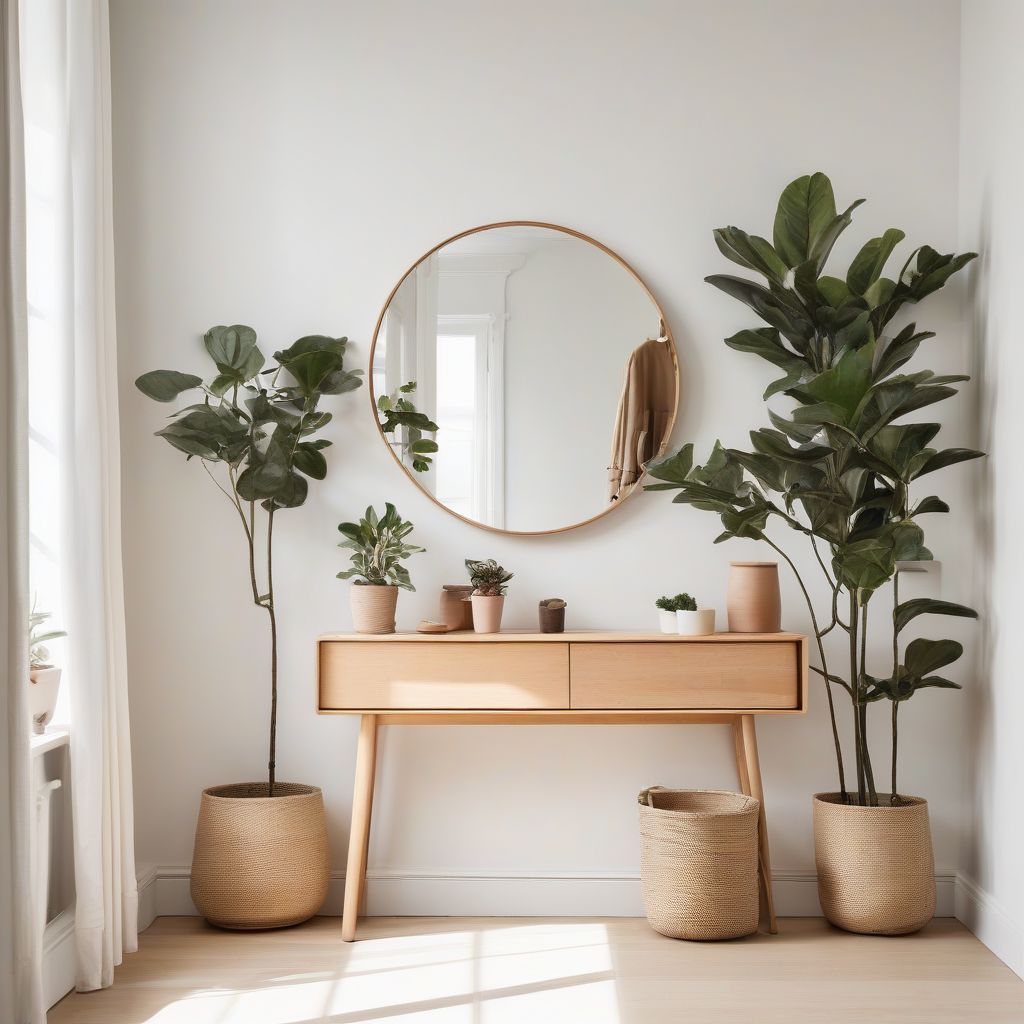Ever walked into a home and felt instantly calmed by the uncluttered, airy entryway? That’s the magic of minimalism. A minimalist entryway isn’t just about aesthetics; it’s about creating a functional and welcoming space that sets the tone for the rest of your home. It’s about coming home to a sense of peace and order, leaving the chaos of the outside world at the door. This guide will walk you through creating a minimalist entryway or hallway space that is both stylish and practical.
Understanding Minimalist Design Principles
Before diving into the specifics, let’s understand the core principles of minimalist design. Minimalism is about stripping away the unnecessary and focusing on functionality. It’s about creating a space that is both visually appealing and highly practical. Think clean lines, neutral color palettes, and a focus on essential items. As renowned architect Ludwig Mies van der Rohe famously said, “Less is more.” This philosophy is at the heart of creating a minimalist entryway.
Decluttering: The First Step to Minimalism
“A place for everything, and everything in its place.” This old adage is the key to decluttering. Start by removing everything from your entryway or hallway. Be honest with yourself: what do you truly need in this space? A minimalist entryway should only contain essential items like a coat rack, a shoe rack, a small table or console, and perhaps a mirror. Donate or discard anything that doesn’t serve a purpose or bring you joy. “Clutter is not just physical stuff. It’s old ideas, toxic relationships and bad habits. Clutter is anything that does not support your better self.” – Eleanor Brownn.
Essential vs. Non-Essential Items
Differentiating between essential and non-essential items is crucial. Ask yourself: Do I use this item regularly? Does it add value to my entryway? If the answer is no, it’s likely clutter. Common culprits include piles of mail, old shoes, and excess decorations. Consider incorporating hidden storage solutions to keep necessary items out of sight.
Choosing the Right Furniture
Furniture in a minimalist entryway should be both functional and aesthetically pleasing. Opt for pieces with clean lines and simple designs. A slim console table can provide a surface for keys and mail, while a wall-mounted coat rack maximizes space. Avoid bulky furniture that can make the space feel cramped. Choose furniture made of natural materials like wood or metal for a warm and inviting feel.
Maximizing Vertical Space
In smaller entryways or hallways, utilizing vertical space is essential. Tall, narrow shelves or wall-mounted hooks can provide ample storage without taking up valuable floor space. Consider installing a floating shelf for keys and mail, or a wall-mounted mirror to create the illusion of a larger space.
The Power of Neutral Colors
Neutral colors like white, beige, and gray are the foundation of a minimalist aesthetic. These colors create a sense of calm and spaciousness. You can add pops of color with accessories, but keep them minimal and cohesive.
Adding Texture and Warmth
While neutral colors are essential, adding texture can prevent the space from feeling sterile. Incorporate natural materials like wood, wool, or linen to add warmth and visual interest. A woven rug or a wooden bench can add a touch of personality without compromising the minimalist aesthetic.
Lighting: Setting the Mood
Lighting plays a crucial role in creating a welcoming atmosphere. Natural light is ideal, so maximize any available windows. Supplement with strategically placed lighting fixtures, such as a pendant light or wall sconces. Avoid harsh overhead lighting, which can make the space feel cold and uninviting. Soft, warm lighting creates a more welcoming ambiance.
Accessorizing with Intention
Accessories should be chosen with intention and kept to a minimum. A small plant, a piece of art, or a decorative bowl can add personality without cluttering the space. Remember, less is more in minimalist design. Choose accessories that reflect your personal style and add a touch of warmth to the space.
 Minimalist Entryway Design
Minimalist Entryway Design
Maintaining a Minimalist Entryway
Once you’ve created your minimalist entryway, the key is to maintain it. Regularly declutter, put things back in their designated places, and resist the urge to accumulate unnecessary items. A few minutes of tidying each day can prevent clutter from building up.
Conclusion
Creating a minimalist entryway or hallway space is about more than just aesthetics. It’s about creating a functional, welcoming, and calming space that sets the tone for your entire home. By decluttering, choosing the right furniture, embracing neutral colors, and accessorizing with intention, you can transform your entryway into a haven of peace and order. Remember the words of Joshua Becker, “Minimalism is the intentional promotion of the things we most value and the removal of everything that distracts us from it.” So, take a look at your entryway. What can you remove? What can you simplify? Embrace the beauty of less, and enjoy the tranquility of your minimalist entryway. We encourage you to share your thoughts and experiences in the comments below. What tips have you found helpful in creating a minimalist entryway? We’d love to hear from you!



